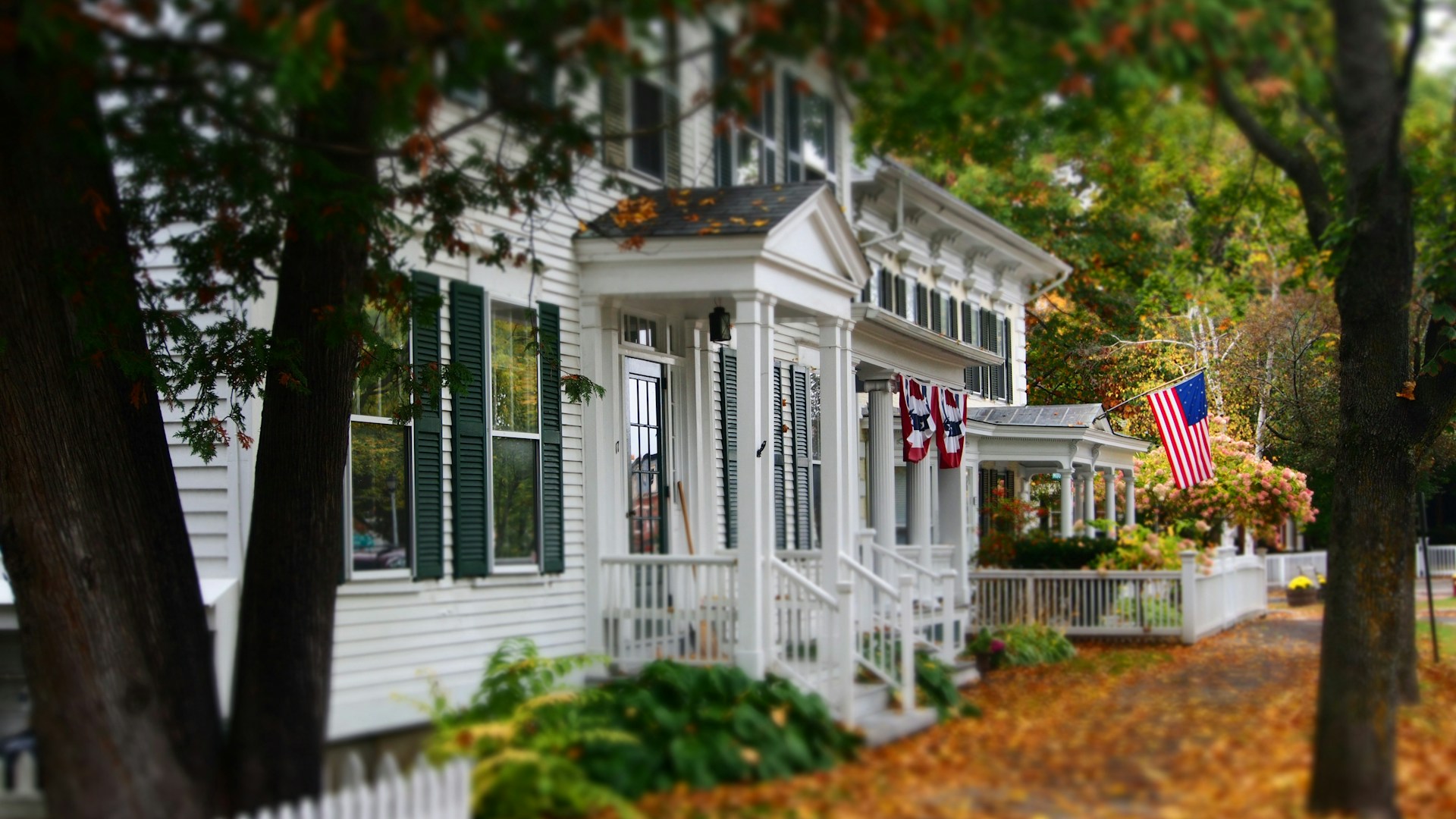VA home loans make homeownership more accessible for many Americans who served in the military. The Department of Veteran Affairs also extends this program to qualifying military spouses who are seeking to buy homes or refinance their primary residences. However, you have to fulfill several requirements to get a VA home loan, and requirements can vary for each lender. This guide will explore how VA home loans work, the requirements, and the costs to keep in mind.
What is a VA Home Loan and Who Can Get One?
A VA home loan is a type of mortgage that is exclusively for service members, veterans, and qualifying military spouses. These loans make homeownership more attainable by breaking the large purchase into monthly payments.
VA home loan terms can be as long as 30 years, and you can choose between a fixed-rate or a variable-rate mortgage. These loans do not have a minimum down payment requirement, and you don’t have to pay private mortgage insurance either.
What are the Eligibility Criteria for a VA Home Loan?
You or your spouse must fulfill a service requirement and present a Certificate of Eligibility (COE) to obtain a VA home loan. You will also have to fulfill financial requirements, which can vary for each financial institution. Most lenders will check your credit score and debt-to-income ratio before giving you financing.
Basic Eligibility Requirements
These are the basic eligibility requirements for VA home loans that separate them from other types of mortgages.
Service Requirements
Service members must have served for at least 90 consecutive days without a break in service to be eligible for a VA home loan. Veterans who were on active duty have different requirements based on when they served. Any veteran who served between August 2, 1990, and the present must have fulfilled at least one of these requirements:
- At least 24 continuous months of service
- A full period of at least 90 continuous days of active duty
Discharge Requirements
If you were discharged, you must have served for at least 90 days if you were discharged for a hardship or a reduction in the force. The requirement shifts to less than 90 days if you were discharged for a service-connected disability.
Surviving Spouse Eligibility
Surviving spouses are eligible for VA loans if their partner died in the line of duty or from a condition incurred during service. The spouse must not remarry before turning 57. Spouses are also eligible for VA loans if their partner is missing in action or is a prisoner of war.
Additional Eligibility Criteria
The basic eligibility requirements are exclusive to the VA home loan program. However, these additional requirements apply to both VA home loans and traditional mortgages.
Credit Score
Lenders will check your credit score to gauge if you can make on-time mortgage payments each month. You will typically need a 620 FICO score or higher. Raising your credit score will help you qualify for a better rate and term.
Income Requirements
You must provide proof of income during the loan application process. Lenders want to ensure you have sufficient income to cover the monthly mortgage payments. A steady employment history can increase your chances of receiving a VA home loan.
Debt-to-Income Ratio
The debt-to-income ratio measures your debt as a percentage of your income. If you pay $2,000/mo in debt and earn $5,000/mo, you have a 40% DTI ratio. Most VA loan providers will want to see a debt-to-income ratio below 41%. However, some lenders will provide financing even if you have a 50% DTI ratio.
Occupancy Requirements
You can only buy a primary residence with a VA home loan. Real estate investors cannot use VA home loans to acquire multiple properties. This financial product won’t even work for a vacation home.
Property Requirements
The VA home loan program has several property requirements. Here’s what you should keep in mind when searching for a home.
Acceptable Property Types
You can only use a VA home loan to buy a primary residence. It’s possible to use a VA home loan to buy a multi-family property if you live in one of the units. Furthermore, the loan’s balance must stay below the loan limits established by The Department of Veteran Affairs.
Minimum Property Standards
The VA uses home requirements known as the Minimum Property Requirements (MPRs) to protect homebuyers. They are designed to prevent significant hiccups after the purchase:
- Working electric, heating, and cooling systems
- No lead-based paint
- Suitable size
- Quality roofing
- No termites, dry rot, fungus, or mold
- Filtered water supply
- Sanitary sewage disposal
- Accessible attics and crawl spaces with proper ventilation
- Accessible from public or private street
Appraisal Process
You will need an independent VA appraiser to determine the property’s value and if it fulfills the basic home requirements. An appraisal can help the lender determine how much to offer for the property.
The VA Loan Certificate of Eligibility (COE)
You will need a Certificate of Eligibility to qualify for a VA loan. Here’s what you need to know about this important document.
What is a COE?
A COE is a document that demonstrates you are eligible for a VA loan. This document does not guarantee that your application will get approved, but it allows you to submit a VA loan application.
How to Apply for a COE
You can request a Certificate of Eligibility by heading over to the VA.gov website. The steps to apply for a COE depend on the type of service you fulfilled.
Timeframes for Receiving a COE
It can take approximately 30 days to receive a certificate if you apply online. The entire process can take up to six weeks.
The VA Funding Fee
All mortgages have closing costs, but VA home loans also have a funding fee. Here’s what you need to know.
What is the VA Funding Fee?
The VA funding fee is an additional expense on top of closing costs that helps to support the VA program. This funding fee ranges from 1.25% to 3.3%, depending on how much money you put down. This funding fee compensates for the fact that borrowers don’t have to put any money down and won’t have to contend with private mortgage insurance if they have less than 20% equity.
Exemptions and Reductions
You will have a lower funding fee if it’s your first time taking out a VA loan. When it’s the first time, the fee ranges from 1.25% to 2.15% of the loan’s value—making a down payment of less than 5% results in the maximum fee. A 5%-10% fee results in a 1.5% fee, while a down payment of 10% or more only results in a 1.25% funding fee.
After the first use, you’ll have to pay a 3.3% funding fee if you put less than 5% down. The VA funding fees for a down payment of 5% or more remain the same regardless of whether it’s your first time or you have taken out several VA loans.
Some borrowers are exempt from paying the funding fee. You must fulfill one of these parameters to avoid the funding fee:
- You are receiving VA compensation for a service-connected disability.
- You are eligible to receive VA compensation for a service-connected disability but are receiving retirement or active-duty pay instead.
- You are receiving Dependency and Indemnity Compensation (DIC) as the surviving spouse of a veteran.
- You are a service member who is eligible to get compensation because of a pre-discharge claim.
- You have evidence that you received the Purple Heart before the loan closing date.
Funding Fee Refunds
If you receive VA compensation for a service-connected disability, you can be eligible for a refund of the VA funding fee. You can call your VA regional loan center on weekdays from 8 a.m. to 6 p.m. Eastern Time to see if you qualify for a refund.
The VA Home Loan Process
Now that you know the requirements, it’s time to explore the VA home loan process. Here’s what you can expect.
Pre-Approval vs. Pre-Qualification
Pre-approval and pre-qualification both increase your chances of receiving a loan, but a pre-approval is more available. A lender scrutinizes your finances and credit during pre-approval to determine how much you can borrow. Pre-qualification is based on information you provide to a lender, but the lender doesn’t go much deeper than what you provide. Pre-qualification is good for seeing how much you can get, while pre-approval is more official.
Finding a VA-Approved Lender
You’ll have to find a VA-approved lender to receive financing. Many lenders have their own requirements, such as a 620 FICO score and a 41% debt-to-income ratio. Requirements, rates, and terms will vary for each lender, so it’s a good idea to compare multiple options.
Steps to Closing on a VA Home Loan
You can follow these steps to close on a VA home loan.
- Step 1: Assess how much you need
- Step 2: Gather the necessary documents
- Step 3: Compare lenders
- Step 4: Get pre-approved
- Step 5: Apply for multiple VA loans
- Step 6: Compare loans and decide on the right one for you
- Step 7: Close on the VA loan
Are VA Loans Hard to Qualify For?
VA loans aren’t too difficult to obtain compared to other mortgages. Most lenders require a 620 FICO score and a 41% debt-to-income ratio. However, you can get a loan with a 50% DTI ratio if you find the right lender. They’re easier to obtain than most loans, but it is easier to get approved for an FHA loan than it is to receive a VA loan.
Qualifying for a VA loan is not as difficult as some may think, especially with the help of The Federal Savings Bank. The Federal Savings Bank proudly offers VA loans to eligible veterans, active duty service members, and their families. While there are requirements that must be met, these loans are designed to be more accessible for those who are qualified. Let The Federal Savings Bank guide you in achieving your dream of homeownership. Visit their website and answer a few questions to learn more about how you can take advantage of a VA loan and start the process of becoming a homeowner.







